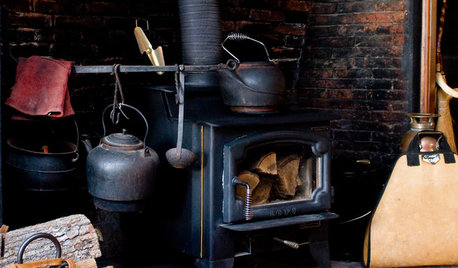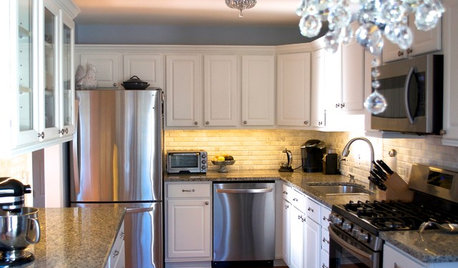Mold in dishwasher
hhireno
13 years ago
Related Stories

HOUSEKEEPINGTackle Big Messes Better With a Sparkling-Clean Dishwasher
You might think it’s self-cleaning, but your dishwasher needs regular upkeep to keep it working hard for you
Full Story
HOUSEKEEPINGDishwasher vs. Hand-Washing Debate Finally Solved — Sort Of
Readers in 8 countries weigh in on whether an appliance saves time, water and sanity or if washing by hand is the only saving grace
Full Story
KITCHEN DESIGNKitchen of the Week: Pushing Boundaries in a San Francisco Victorian
If the roll-up garage door doesn’t clue you in, the blue cabinets and oversize molding will: This kitchen is no ordinary Victorian galley
Full Story
KITCHEN DESIGNKitchen Confidential: Go Bold on a Budget
Discover 5 ways this black and white beauty broke the mold but not the bank
Full Story
KITCHEN DESIGNChef's Kitchen Works Hard Yet Stays Pretty
A butler's pantry complete with refrigerator and dishwasher helps a restaurateur contain the mess when cooking and entertaining at home
Full Story
KITCHEN DESIGN10 Victorian Kitchen Features for Modern Life
Keep the practicality and beauty of a traditional kitchen while enjoying modern amenities and style
Full Story
KITCHEN DESIGNDIY Spirit and $8,700 Transform a Townhouse Kitchen
The Spanos taught themselves some remodeling tricks, created a Houzz ideabook and then got to work on their kitchen makeover
Full Story
HEALTHY HOMEWhat You Need to Know About Dust and How to Fight It
Breathe easier with these 10 tips for busting mites, dander and other microscopic undesirables
Full Story
KITCHEN DESIGN12 Designer Details for Your Kitchen Cabinets and Island
Take your kitchen to the next level with these special touches
Full Story
HEALTHY HOME18 Ways to Allergy-Proof Your Home
If you're itching to reduce allergy symptoms, this mini guide to reducing allergens around the house can help
Full StorySponsored
More Discussions






nerdyshopper
asolo
Related Professionals
Euclid Kitchen & Bathroom Designers · Lockport Kitchen & Bathroom Designers · Ojus Kitchen & Bathroom Designers · Pleasant Grove Kitchen & Bathroom Designers · Soledad Kitchen & Bathroom Designers · Normal Kitchen & Bathroom Remodelers · Lincoln Kitchen & Bathroom Remodelers · Glenn Heights Kitchen & Bathroom Remodelers · Palestine Kitchen & Bathroom Remodelers · Kaneohe Cabinets & Cabinetry · Los Altos Cabinets & Cabinetry · Red Bank Cabinets & Cabinetry · Red Bank Cabinets & Cabinetry · Wadsworth Cabinets & Cabinetry · Central Cabinets & CabinetryhhirenoOriginal Author
asolo
asolo
hhirenoOriginal Author
weissman
marcydc
weedmeister
hhirenoOriginal Author
nerdyshopper
captsmethwick
hhirenoOriginal Author
marcydc